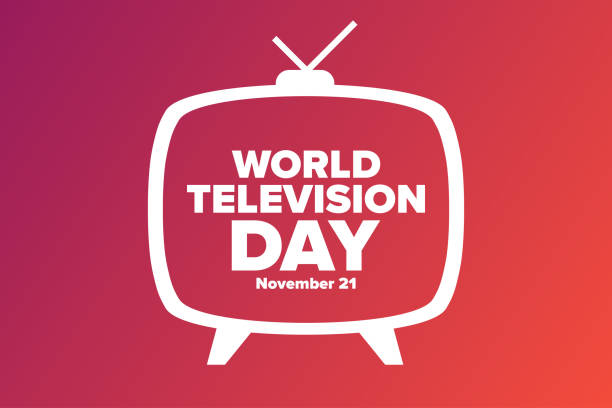
The “television experience” has morphed into the more broadly defined “viewing experience,” extending to mobile and connected devices, new streaming services, and multiple screens. Accelerating these trends are a changing business landscape, IP and cloud workflows, and AI and data-driven analytics that will re-shape content creation. But whichever way it’s defined, created, or consumed, quality content will always be a social influencer, attracting an audience craving unique, customized, and engaging viewing experiences.
“High-profile live TV events still have the capacity to attract large audiences,” said Mike Ward, head of marketing at Singular.live. “At the same time, what we now know as television has changed drastically in terms of the platforms on which content is distributed and watched, giving audiences more options.”

“The shift from a linear, scheduled format to an on-demand, streaming model has allowed viewers to access content whenever they desire,” said Dan Brooks, head of marketing and pr at Mark Roberts Motion Control (MRMC). “Viewers can now enjoy content on their smartphones or social media platforms, broadening the scope of content consumption beyond traditional screens.”
“As the industry tries to figure out the appropriate models for streaming, viewers still want to be entertained,” said John Wastcoat, senior vice president, brand development, and marketing at Zixi. “Live events and live linear programming are now found on a diverse and confusing choice of OTT platforms, and the platforms themselves, which never relied on satellite delivery, are deploying IP workflows in the cloud.”
Wastcoat added that legacy broadcasters are moving to IP and the cloud to reduce operations costs, which allows them to create and acquire more content and monetize it in different ways.
As the industry continues to accept IP distribution and cloud alternatives while realizing savings of 50% to 90%, audiences will begin to see fewer glitches and better broadcast quality, according to Paul Calleja, CEO and CTO at GlobalM.
“The cloud is reshaping how TV is both produced and distributed, facilitating remote production, giving broadcasters and streamers the flexibility to navigate peaks in viewership, and enabling content providers to go direct-to-consumer,” said Sassan Pejhan, vice president of business development at Ateme.

GlobalM’s Calleja added that “companies will see more flexibility, from multiple different clouds to open protocols, to close deals with rights holders at the last possible minute. The future of television lies in the hands of organizations that understand that content distribution needs to change to software-defined video networks to meet the requirements of high-quality, low-latency, or file-based video delivery over the internet.”
Advancements in TV production technology have also helped level the content creation playing field.
“Behind the enabling technology, the biggest transformation has been who can originate content,” said Neil Maycock, chief commercial officer at Pebble. “What was exclusively the domain of large companies is now democratized for individuals.”
Technological advancements have democratized production by enabling smaller independent producers to create high-end 4K material, according to Brooks at MMRC. He added that the company’s range of broadcast and motion control solutions drives the advancement of content capture, from creating movement for PTZ camera enablement to automated camera positions for live sports and news broadcasts, full-scale motion control to achieve in-camera special effects, and virtual set integration.

Virtual studio technology has opened exciting new possibilities for driving higher-quality viewing experiences across all TV genres, according to Richard Wormwell, head of production Innovation at dock10. “Sports television has been revolutionized by virtual studios,” he said, “elevating commentary and stats to a new level of immersive engagement and enabling jaw-droppingly realistic scenes previously impossible for TV.”
New technologies are transforming viewers from passive spectators to active participants with endless possibilities for customization and personalization, according to Ateme’s Pejhan. “The convergence of video with social media, gaming, shoppable TV, betting, and immersive viewing experiences will see audiences engage with content in completely new ways,” Pejhan said.
Vinayak Shrivastav, CEO and co-founder at VideoVerse, said, “The emergence of OTT streaming apps has transformed media consumption, offering efficient content delivery and diverse pricing models. Seamless integration of internet-connected TVs and streaming devices grants users unparalleled control over their viewing choices. While live TV still remains relevant in some cases, viewers now demand uninterrupted streaming, rapid speeds, and a tailored viewing experience.”
Shifting the focus to business trends, Andy Shenkler, CEO and co-founder of TMT Insights, said, “We’ve seen a re-focus on cost controls, efficiencies, and stabilization to reduce footprints while still being able to provide scale and adoption of new consumer offerings to differentiate services amongst a crowded marketplace. We’ll see many companies shifting greater investment from outsourced vendors to insourcing all but the most commoditized sets of services to ensure service continuity.”
Shenkler forecasted an investment focus on technologies that further enable cost-efficiencies for high-touch services, such as AI and ML applications.

Manufacturers have an opportunity and responsibility to ensure television positively impacts future generations, according to Alun Fryer, technical marketing lead, hyperconverged solutions at Ross Video. “We are acutely aware of our responsibility to lead by example in using technology to steer us toward a more sustainable future. Our commitment involves developing environmentally conscious technologies and promoting sustainable practices in manufacturing, broadcasting, and video production.”
Television is increasingly being driven by data-enabled technologies, according to Kenny Miller, national director of sales at SuiteLife Systems.
“From a monitoring and control perspective, aggregating and managing data is critical to business integrity,” Miller said. “Monitoring and control technologies protect revenue streams by improving operational efficiency and reducing operational costs, while identifying performance trends and preempting technical problems by alerting engineers to potential problems that could lead to broadcast failures.”
He added that monitoring and controlling ecosystems can help broadcasters gain valuable insights into their operations.
Wormwell at dock10 believes “Technological advances in production are reinvigorating television content in ways that make people still want to watch. Made-for-TV content is still a focus in most households and remains as relevant today as it was 50 years ago."
Pebble’s Maycock continued, “In our race to enable more content on more devices, it’s important that we ensure television remains a force for good: informing, educating, and entertaining."
Singular.live’s Ward summarized, “There is more that can be done to modernize the viewer experience, especially as more live production gets digitized using cloud-native or web tools that enable localization, personalization, and interactivity combined with data. We can’t wait to see what comes next."







